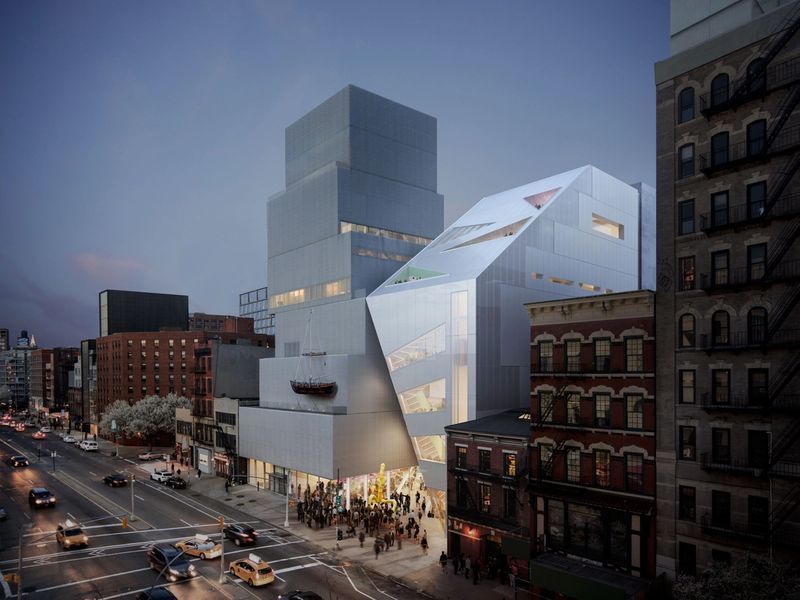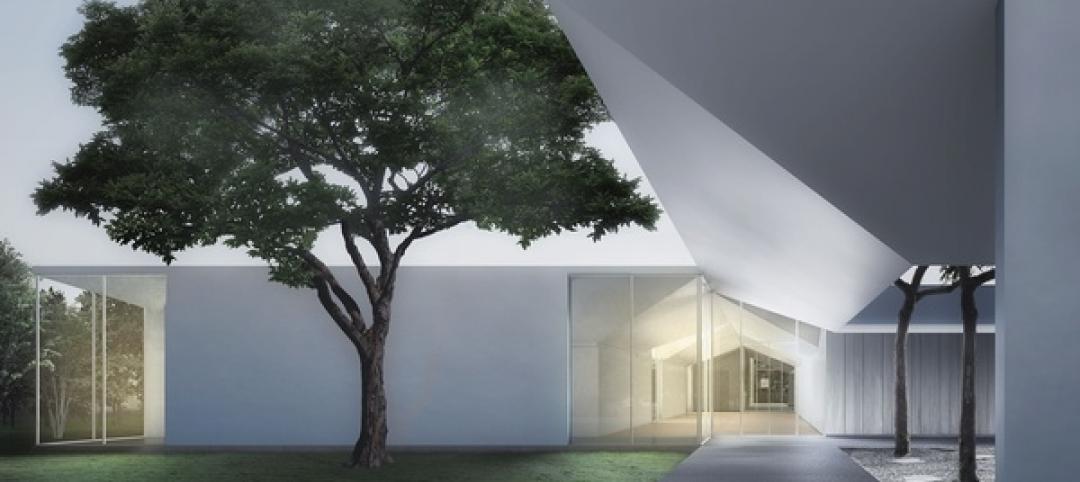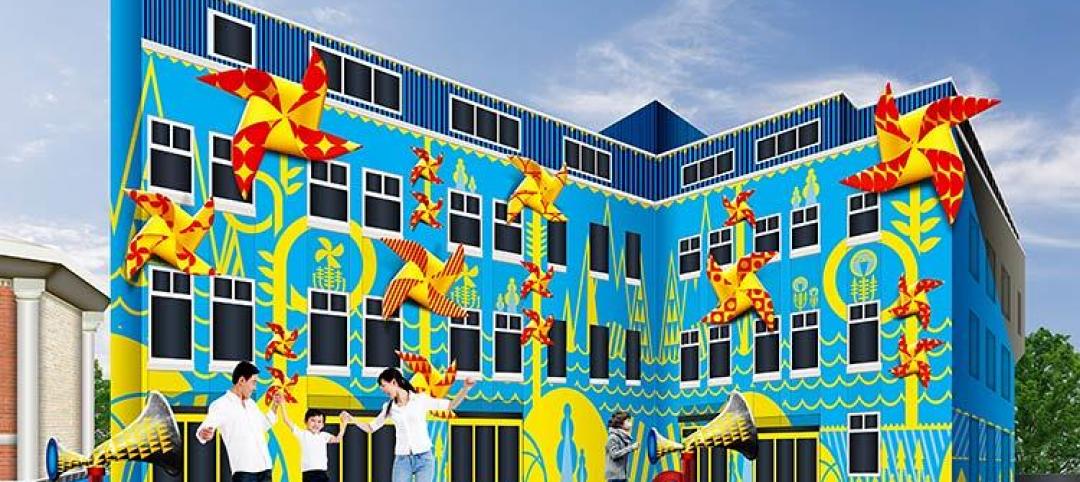The New Museum recently announced plans for its second building, a seven-story, 60,000-sf structure that will include three floors of galleries, doubling the museum’s exhibition space.
The new building will replace the current 50,000 sf building at 231 Bowery. The new building will include an atrium stair to improve vertical circulation and offer views of the surrounding neighborhood. The stair and the new entry will open the museum up to the city by aligning to the terminus of Prince Street. The new building will also provide three new elevators and additional public spaces and services such as an expanded lobby and bookstore, an upper level forum connecting to the existing Skyroom, and a new 80-seat restaurant.
A total of 10,096 sf of exhibition space will be added with the new galleries connecting to the existing galleries on three levels (second, third, and fourth floors). The ceiling heights will align on each floor to create expanded space for exhibitions and horizontal flow between the buildings. The expanded spaces can be used singularly across the floor-plate to host larger exhibitions or separately for diversity and curatorial freedom.
See Also: Frank Lloyd Wright Trust announces new Visitor and Education Center
The building’s lower levels will be devoted to back of house and storage; the ground floor will house the restaurant, expanded lobby, bookstore, and a public plaza set back at street level; the second, third, and fourth floors will house galleries; the fifth floor will house NEW INC; the sixth floor will house an artist-in-residence studio and a forum for events and gathering; and the seventh floor will house the education programming and additional events.
The façade uses a laminated glass with metal mesh to provide a simple, unified exterior alongside the main SANAA-designed New Museum building.
Related Stories
| Mar 13, 2014
Do you really 'always turn right'?
The first visitor center we designed was the Ernest F. Coe Visitor Center for the Everglades National Park in 1993. I remember it well for a variety of reasons, not the least of which was the ongoing dialogue we had with our retail consultant. He insisted that the gift shop be located on the right as one exited the visitor center because people “always turn right.”
| Mar 12, 2014
14 new ideas for doors and door hardware
From a high-tech classroom lockdown system to an impact-resistant wide-stile door line, BD+C editors present a collection of door and door hardware innovations.
| Mar 5, 2014
5 tile design trends for 2014
Beveled, geometric, and high-tech patterns are among the hot ceramic tile trends, say tile design experts.
| Feb 24, 2014
New Menil Drawing Institute will fit in with leafy surroundings
In Houston, plans are being finalized for the first freestanding American building built to house and conserve modern and contemporary drawings.
| Feb 18, 2014
Robert A.M. Stern sent back to drawing board for Revolutionary War museum in Philadelphia
The Philadelphia Art Commission has suggested some significant changes to the design by Robert A.M. Stern Architects, namely the elimination of a cupola and the addition of eye-level windows on the ground floor.
| Feb 14, 2014
Giant interactive pinwheel adds fun to museum exterior
The proposed design for the Santa Cruz Museum of Art and History features a 10-foot pinwheel that can be activated by passersby.
| Feb 14, 2014
Crowdsourced Placemaking: How people will help shape architecture
The rise of mobile devices and social media, coupled with the use of advanced survey tools and interactive mapping apps, has created a powerful conduit through which Building Teams can capture real-time data on the public. For the first time, the masses can have a real say in how the built environment around them is formed—that is, if Building Teams are willing to listen.
| Feb 13, 2014
Extreme Conversion: Nazi bunker transformed into green power plant, war memorial
The bunker, which sat empty for over 60 years after WWII, now uses sustainable technology and will provide power to about 4,000 homes.
| Jan 30, 2014
How reverse engineering nature can spur design innovation
It’s not enough to copy nature. Today’s designers need a deeper understanding of environmental nuance, from the biome in.
| Jan 28, 2014
16 awe-inspiring interior designs from around the world [slideshow]
The International Interior Design Association released the winners of its 4th Annual Global Excellence Awards. Here's a recap of the winning projects.
















